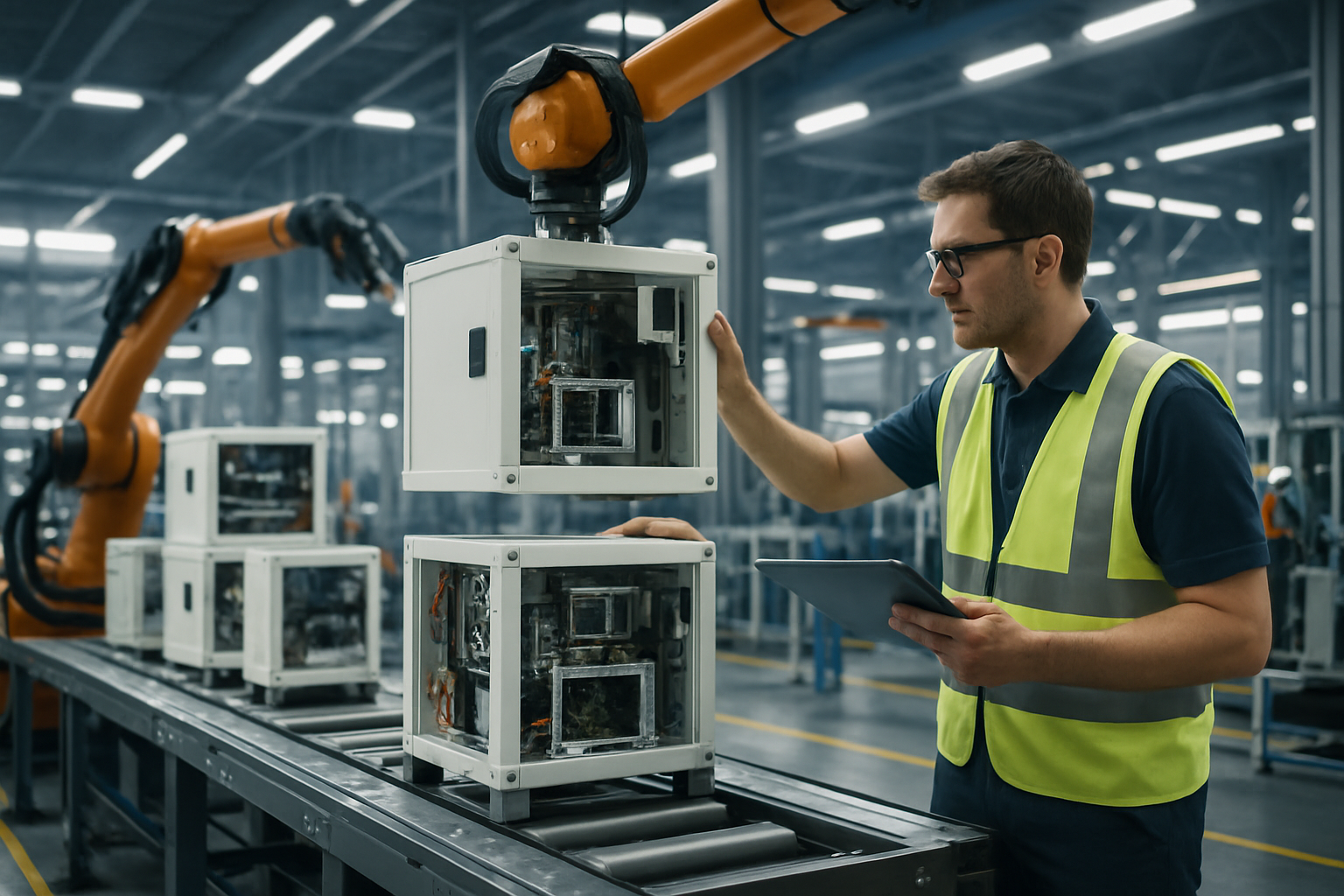Collaborative Robotics: Redefining Human-Machine Synergy
In an era of rapid technological advancement, collaborative robotics emerges as a game-changing force in industrial operations. This innovative approach to automation is reshaping the dynamics between human workers and machines, promising enhanced productivity, improved safety, and unprecedented flexibility in manufacturing processes.

The Evolution of Human-Robot Collaboration
The concept of robots working alongside humans is not entirely new, but recent advancements in sensor technology, artificial intelligence, and machine learning have dramatically expanded the possibilities. Early industrial robots were large, dangerous machines that required strict safety barriers and specialized programming. In contrast, modern cobots are compact, safe to work around, and can be easily reprogrammed for different tasks.
This evolution has been driven by the need for more flexible manufacturing processes, capable of adapting to changing consumer demands and shorter product lifecycles. Collaborative robots offer a solution that combines the precision and tireless nature of machines with the problem-solving skills and adaptability of human workers.
Key Features of Collaborative Robots
Collaborative robots are distinguished by several key features that set them apart from traditional industrial robots:
-
Enhanced Safety: Cobots are equipped with advanced sensors and force-limiting technology, allowing them to detect human presence and adjust their movements accordingly.
-
Ease of Programming: Many cobots can be programmed through intuitive interfaces or even by physically guiding them through desired movements, reducing the need for specialized programming skills.
-
Versatility: These robots can be easily repurposed for different tasks, making them ideal for small batch production or frequently changing product lines.
-
Compact Design: Their smaller footprint allows for easy integration into existing workspaces without major restructuring.
-
Affordability: Compared to traditional industrial robots, cobots are often more cost-effective, making automation accessible to smaller businesses.
Applications Across Industries
The versatility of collaborative robots has led to their adoption across a wide range of industries:
-
Manufacturing: In assembly lines, cobots can handle repetitive tasks while working alongside human operators who focus on more complex aspects of production.
-
Automotive: Cobots assist in tasks such as welding, painting, and quality control, improving precision and consistency.
-
Electronics: The delicate nature of electronic components makes cobots ideal for tasks like circuit board assembly and testing.
-
Healthcare: In medical settings, cobots are used for tasks ranging from laboratory work to assisting in surgical procedures.
-
Logistics: Warehouses employ cobots for picking, packing, and sorting tasks, enhancing efficiency in order fulfillment.
The Impact on Workforce Dynamics
The introduction of collaborative robots is reshaping the industrial workforce in several ways:
-
Skill Enhancement: Workers are developing new skills related to robot operation and maintenance, increasing their value in the job market.
-
Job Redefinition: Rather than replacing human workers, cobots are often taking over mundane or physically demanding tasks, allowing employees to focus on higher-value work.
-
Improved Ergonomics: By handling heavy lifting and repetitive motions, cobots reduce the physical strain on human workers, potentially decreasing work-related injuries.
-
Increased Productivity: The combination of human cognitive skills and robotic precision leads to higher overall productivity and quality.
Challenges and Considerations
While the benefits of collaborative robotics are significant, there are challenges to consider:
-
Initial Investment: Despite being more affordable than traditional robots, the upfront cost can still be substantial for smaller businesses.
-
Cultural Adaptation: Integrating cobots requires a shift in workplace culture and may initially face resistance from employees.
-
Training Requirements: Effective implementation necessitates training programs for employees to work alongside and maintain the cobots.
-
Safety Regulations: As a relatively new technology, the regulatory landscape for collaborative robotics is still evolving, requiring businesses to stay informed about compliance requirements.
-
Cybersecurity: The increased connectivity of cobots introduces new cybersecurity considerations that must be addressed to protect sensitive data and operations.
Maximizing the Potential of Collaborative Robotics
• Conduct thorough task analysis to identify processes best suited for human-robot collaboration
• Invest in comprehensive training programs for employees at all levels
• Prioritize open communication to address concerns and gather feedback from workers
• Regularly assess and optimize cobot integration to ensure maximum efficiency
• Stay informed about technological advancements and regulatory changes in the field
As we look to the future of industrial operations, collaborative robotics stands out as a transformative technology with the potential to redefine human-machine interaction. By combining the strengths of both robots and human workers, businesses can create more adaptable, efficient, and productive work environments. While challenges exist, the benefits of this synergistic approach to automation are clear. As the technology continues to evolve, we can expect to see even more innovative applications of collaborative robotics across industries, further blurring the lines between human and machine capabilities in the workplace.





